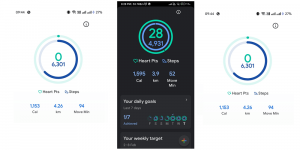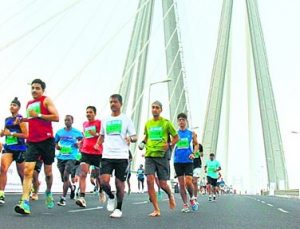
Kids need to move around in order to stay healthy. Regular physical activity combined with healthy eating habits prevents obesity and other diseases.
Experts recommend that children participate in 60 minutes of physical activity every day.
That is why it is so important for kids to spend time outdoors. Kids need outdoor play to be active, burn up excess energy and have fun.
Top benefits of physical activity for kids
You can improve your kids fitness with fun, physical activities. These health related fitness tips & exercises will help your kids combat childhood obesity and grow into healthy adults.
Every other day there’s a study that say most kids are overweight and unfit (and even prone to diabetes).
Most kids have already developed a taste for outside food – pizza, pasta, butter chicken, and so on.
Children are more sedentary now more than ever, they love to eat junk food, spend a lot of time in front of iPads/TVs. And when children are inactive on a regular and long-term basis, the stage is set for health problems to creep up on them later in life.
Research shows that kids who are inactive often become adults who are inactive. And when the human body doesn’t exert itself to burn the energy it consumes in the form of food, that energy is stored as FAT. There are a lot of health problems associated with inactivity.
It’s a disturbing fact that kids fitness levels are plummeting, with childhood obesity levels being at record highs.
As parents, we can’t leave it up to the schools to provide the exercise and physical activities for kids needed for the development of healthy bodies.
In fact, for kids, physical activities can be pretty fun! The secret is finding the right activities.
Participating in physical activity for kids provides a boost in other ways as well by:
- Improves learning
- Promotes healthy growth and development
- Boosts self-esteem
- More than anything, kids fitness games are FUN!
There’s a wide variety of kids fitness games to choose from, so let your kids enjoy all the benefits of physical activity!
India has second highest number of obese children in world, after China: Study
Even though there is growing awareness about Kids fitness in India, more kids are obese and unfit in India, says various studies.
Most school going children in India are overweight, unfit and prone to diabetes, and it has got nothing to do with any specific age group, gender, or location within India. It’s a nationwide observation.

A study published in The New England Journal of Medicine reveals that India has the second highest number of obese children in the world, after China. Among the 20 most populous countries studied, China and India had the highest numbers of obese children.
The rate at which obesity is growing in children in India is quite alarming as it means we will be faced with a large number of obese adults, prone to non-communicable diseases such as diabetes, cardiovascular diseases and even certain types of cancer.
The fitness and body mass index (BMI) levels of school children in India — regardless of age, gender, region or city — continues to be unhealthy. Lack of physical activity increases the risk of obesity and health-related problems in adolescence, and adulthood.
The study reveals that only those schools which had more than three sessions of physical education had fitter children. Schools with structured sports and physical education sessions showed improved children’s fitness. Active children also have greater attention spans and perform better academically.
While our lives have becoming faster, with everything available on our fingertips, our bodies have become slow and sluggish. Children are also eating less of traditional and fresh foods and enjoy more of packaged and processed foods.
The biggest problem with our food choices is that junk food is everywhere, it’s easily available to order on our mobile phones, and our favourite celebrities coax us into eating it; several schools have also become marketing avenues for junk food.
Junk food companies targets children by hiring role models as brand ambassadors, giving free gifts, toys etc. with food items and by projecting junk food as healthy food items. Research shows that children are more likely to want to experience what they see in advertisements. India could learn from countries like the UK and Ireland who have banned celebrities from endorsing of unhealthy foods.
As expected, children in non-metros performed marginally better than their counterparts in the six metro cities on most of the fitness parameters. This is because of better weather, better sporting facilities and a better lifestyle.
Another interesting observation was that even though awareness about fitness is seeing an upward trend, it is not translating into better fitness levels in children. Reduced physical activity, unhealthy food eating patterns and virtual gaming, are some of the major causes for this.
Children across the country showed an alarming lack of fitness, and the primary causes are:
- Sedentary lifestyles, unhealthy eating habits and little or no play.
- Most schools still concerned about good grades, and not physical education
- Children prefer watching cartoons on TV, or playing games, or playing cricket in the small lanes where you don’t have to do much running
- Most parents encourage fast food as they themselves are too busy to cook or prefer eating out frequently
Do you know that the National Association for Sports and Physical Education (NAPSE) in United States, recommends that a child should play for one hour a day?
Obviously, this holds true for Indian children too.
And its not only for the parents to ensure this happens, even schools should have at least three physical education periods in a week.
Adverse affects of heavy school bags on spine and back
Research shows carrying heavy school bags for several years has adverse impact on students’ health as they enter into adulthood.

The American Academy of Orthopedic Surgeons recommends students carry only 10 percent of their body weight. For example, if a child weighs 20 kilogram (around 6 years), then the child should carry only around 2.0 kilograms of weight.
But I doubt if that is happening in India. A 6-year old child (most probably in first standard) is likely to carry a much heavier school bag.
So how can a heavy school bag impact the child?
Doctors say heavy bags can cause neck and back pain, shoulder strain, and even fatigue.
“There is particular concern for the junior students in secondary schools, as the spine is at a critical stage of development in children between 12 – 14 years of age. This is also the stage at which the bag weight to body weight ratio is likely to be high as some students are still quite small but carry loads similar to larger and older children,” study from Trinity Health Sciences in Dublin.
Heavy school bags make them bend down too much making them adopt a bad posture, which in turn creates further health issues.
By the way, carrying bags improperly, like hanging bags only on one shoulder also adds to the problem.
“Neck pain is as common as back pain amongst adolescents. Perceived school bag load, duration of carriage and method of transport to school are associated with back and neck pain,” noted the study in the Journal of Physiotherapy.
- In the USA, health specialists have recommended the critical ratio of the weight of school bag to the student’s body weight.
- In the United Kingdom, health specialists have called for a review of the weights students carry.
- In Australia, some state governments provide advisory about the risks of heavy school bags, ways of reducing the risks, alternatives to carrying school bags, and ways of reducing the number of books students carry.
- In India, some courts have issued orders to state governments to formulate policies that would prevent students from carrying heavy school bags.
Links









Leave a Reply